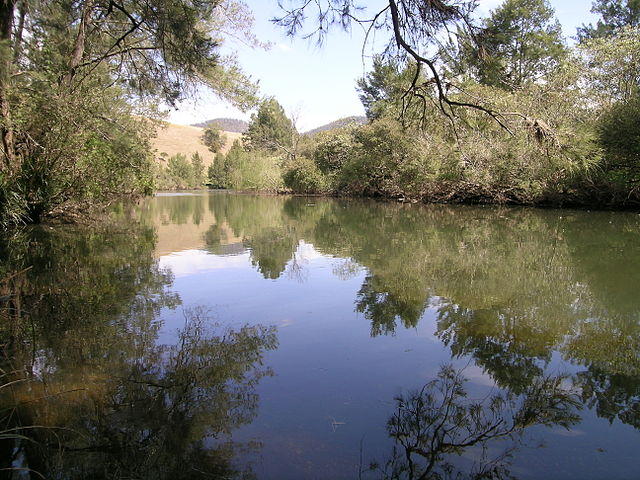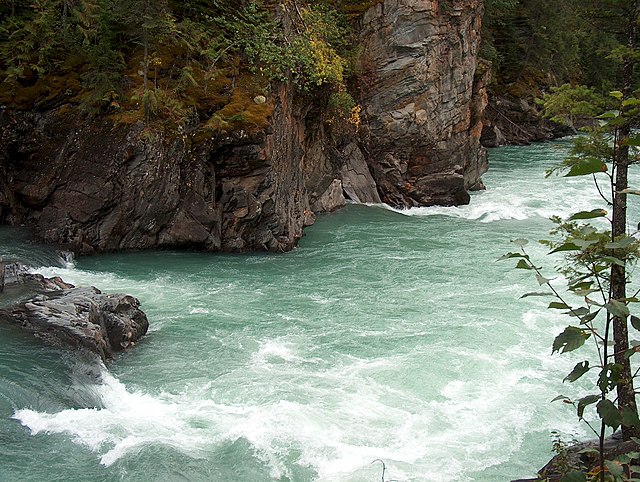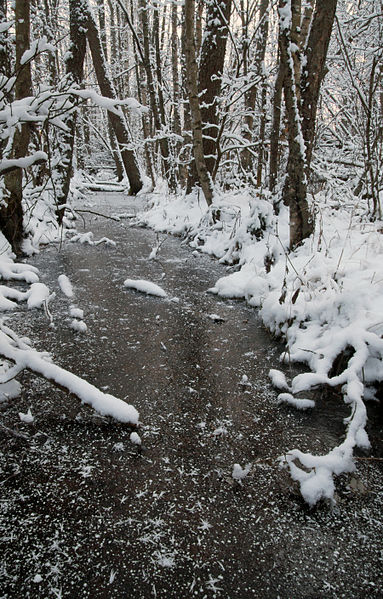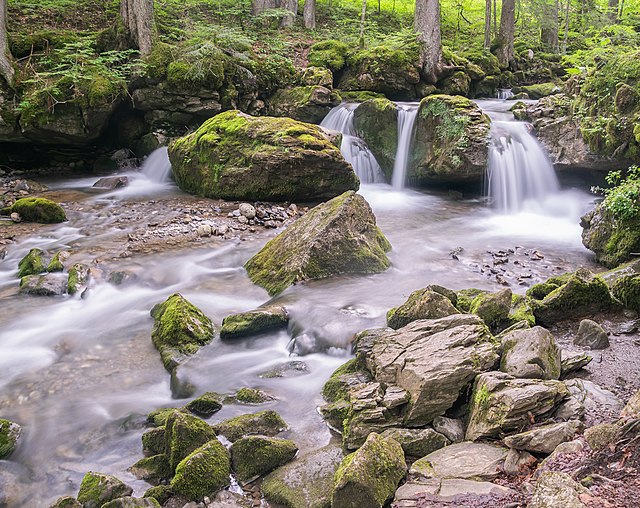River ecosystems are flowing waters that drain the landscape, and include the biotic (living) interactions amongst plants, animals and micro-organisms, as well as abiotic (nonliving) physical and chemical interactions of its many parts. River ecosystems are part of larger watershed networks or catchments, where smaller headwater streams drain into mid-size streams, which progressively drain into larger river networks. The major zones in river ecosystems are determined by the river bed's gradient or by the velocity of the current. Faster moving turbulent water typically contains greater concentrations of dissolved oxygen, which supports greater biodiversity than the slow-moving water of pools. These distinctions form the basis for the division of rivers into upland and lowland rivers.
This stream operating together with its environment can be thought of as forming a river ecosystem.
A pensive Cooplacurripa River, NSW
Rapids in Mount Robson Provincial Park
Castle Geyser, Yellowstone National Park
A stream is a continuous body of surface water flowing within the bed and banks of a channel. Depending on its location or certain characteristics, a stream may be referred to by a variety of local or regional names. Long, large streams are usually called rivers, while smaller, less voluminous and more intermittent streams are known as streamlets, brooks or creeks.
Rocky stream in Italy
Frozen stream in Enäjärvi, Pori, Finland
Stream near Montriond in south-eastern France
Aubach (Wiehl) in North Rhine-Westphalia, Germany








